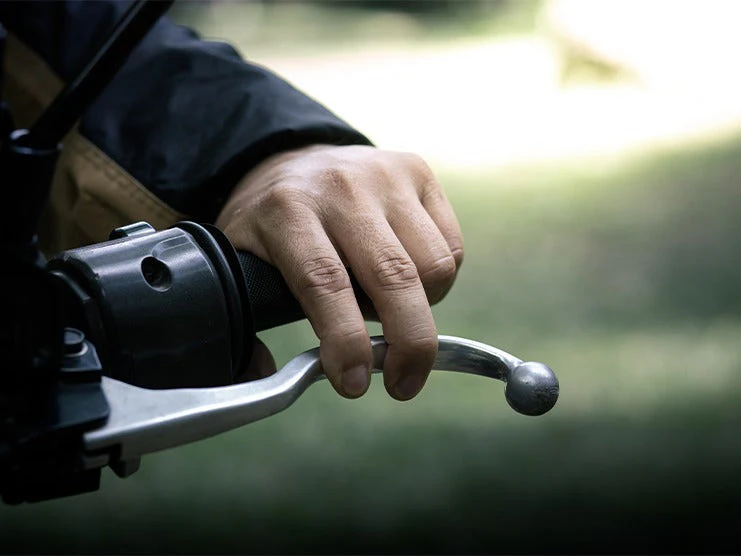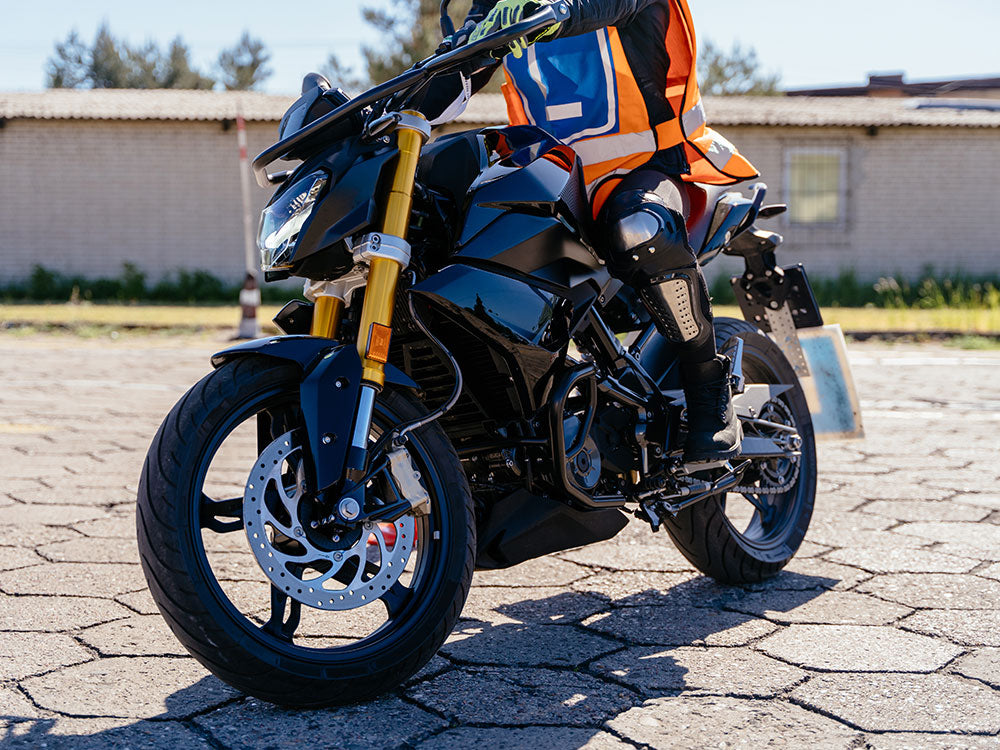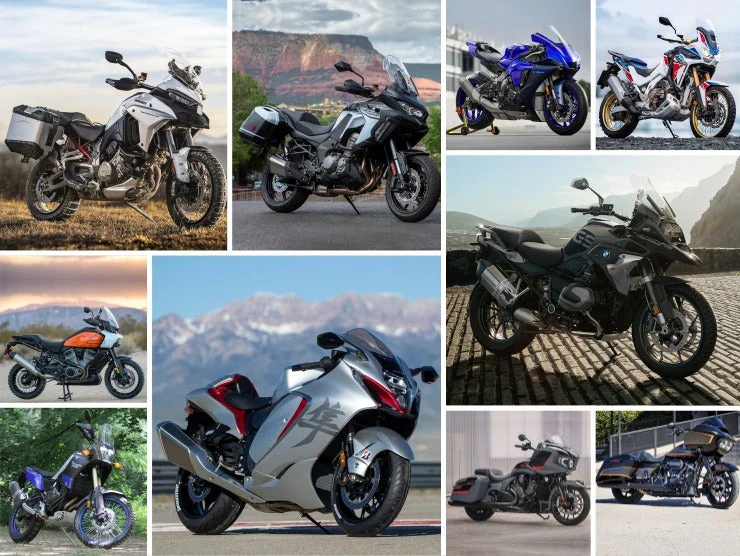On occasion, the clutch cable may suddenly snap. Without a clutch cable, the engine won't be able to smoothly change gears. While the riders can still shift gears at lower rpms, trying to do so at high rpms might cause the rear wheel to lock in place.
For new riders, riding a motorbike with a damaged clutch cable can be dangerous since it can damage the engine and cause wear and tear.
This article discusses reasons and solutions for broken motorcycle clutch cables.
Table of Content
1. What Does a Motorcycle Clutch Cable Do?

The clutch cable connects the transmission and the clutch to the clutch pedal. When the rider presses down the clutch pedal, the clutch cable pulls the clutch and disengages it from the transmission system.
This allows the motorcyclist to change between gears.
The clutch cable is steel braided to ensure that it lasts for a long time.
However, it can still be prone to breaking. If the clutch cable breaks, the connection between the clutch pedal and the transmission system will also break, rendering your motorcycle useless since you are no longer able to change gears.
2. What Causes a Motorcycle Clutch Cable to Break?

2.1 Bad Clutch Pressure Plate
The clutch pressure plate holds the clutch against the flywheel by applying pressure. If the clutch pressure plate is damaged, it might apply too much pressure on the clutch cable and cause it to break.
2.2 Restricted Movement
A newly installed clutch should have enough freedom of movement.
Otherwise, restricted movement will put too much stress on the cable and cause it to break prematurely.
2.3 Rust
If your motorcycle has been parked in a damp location and the clutch has not been used for a long period, then rust can form on and weaken the clutch cable. This can eventually result in it breaking.
2.4 Wear Over Time
Since the clutch is often used while riding, it may break due to being constantly put under pressure. A cable can gradually lose its strength due to wear and tear. Every once in a while, you must check the cable for any signs of stretching or damage.
To keep the cable in good condition and give it a long life, you’ll need to take care of your motorcycle clutch.
2.5 Not Using the Clutch Properly
Usually, beginners who are learning how to ride a motorcycle use the clutch incorrectly. If you are jerking around while riding a motorcycle, you may not be using the clutch properly. This might damage the clutch plates and break the clutch cable.
2.6 Bad Mileage and High RPMs While Idling
If your motorcycle has bad mileage and the engine is revving higher than normal when idling, this may be due to a damaged clutch cable.
3. Signs of Damaged Clutch Cable
3.1 Slipping Gear
A damaged clutch cable can cause the transmission to pop out of gear. This commonly occurs when carrying a heavy load. The worn-out or stretched clutch cable can cause your motorbike to wobble and push the engine’s limits. This can be dangerous since your parked motorcycle might suddenly start moving.
3.2 Leaks
When inspecting the clutch system, you may find a leaking clutch cable. A leak means that the clutch cable is broken or detached. This problem may require getting a replacement clutch cable.
3.3 Hard Clutch Pedal
If the clutch pedal is always pressed, the cable will not be able to move and will cause resistance when stepped on. If you continue to step on a pedal with resistance, it may cause the cable to break.
3.4 Difficulty Shifting Gears
When the clutch cable is stretched or damaged, your motorcycle will behave as if it doesn’t have a clutch. This means you will not be able to operate the clutch or shift between gears. Your motorbike will be unable to move when shifted into gear.
3.5 Clutch Pedal Sinks to the Floor
The clutch pedal will become disconnected from the clutch linkage if the clutch cable is damaged or broken. This will cause the clutch pedal to have little to no resistance and leave you unable to shift gears.
4. How to Fix a Broken Motorcycle Clutch Cable
It’s best to replace the clutch cable instead of repairing it since the latter requires more effort and time. All you need to do is to remove the damaged clutch cable and install a new one.
Here’s how you can install a new clutch cable:
- Turn off the Ignition: First, turn off the ignition and remove the clutch lever from the handlebars. After that, remove the broken clutch cable where it is connected to the lever. You can refer to the motorcycle manual if you have trouble removing the clutch cable.
- Disconnect the Cable from the Engine: Follow the clutch cable all the way to the engine and remove the end connected to it.Once you remove the old cable, get a new one and install it.
- Use the Same Route for the New Clutch Cable: When installing the new cable, make sure to follow the same route as the previous cable. Otherwise, the cable may press against the engine and melt due to the high heat.
- Connect the Other End to the Engine: Lastly, connect the other end of the cable to the engine and make sure to secure it tightly.
5. How to Ride a Motorcycle with a Broken Clutch Cable?
When you are riding your motorcycle and discover that the clutch lever is loose, it may have become broken due to constant strain on the clutch cable. Without the clutch, shifting gears is challenging and might result in a jerky transmission. However, you can do the following to safely ride a motorcycle without a clutch in emergency situations.
5.1 Upshifting
- Step 1: To upshift between gears, check the rpm on the dashboard and listen to the sound of the engine. Generally, rpms between 2,000 and 2,500 rpm are ideal for upshifting.
- Step 2: Once you reach the appropriate rpm, shift gears by releasing the throttle for about 3-5 seconds. Releasing the throttle while upshifting is essential because it eases pressure on the transmission and ensures the gearbox is not damaged.
Note: The rear wheel of the motorcycle will experience the minimum jerks while upshifting the gears in this way. There is a chance that you might stress the transmission system if you shift too soon or too late.In addition to noting the RPM, it's important to read the signals the engine usually gives while shifting gears.
- Step 3: If you are riding in second gear, gradually raise the throttle until you reach about 2200 rpm, then release the throttle to change to third gear.Apply the right amount of pressure when shifting gears. Your foot should apply a moderate amount of pressure after you reach the recommended rpms to shift the gears. Keep in mind that the gears may squeal if there is too much pressure.
- Step 4: Be careful to gently squeeze the throttle again after the upshift to maintain a consistent speed.
5.2 Downshifting
You can downshift gears without engaging the clutch. It is best to downshift when the rpm is between 1,000 and 1,500 rpm. The throttle must be released before a gear shift and then slowly drawn back once the gear has finished shifting.
- Step 1: Gently release the throttle; as soon as you feel a decrease in speed, push lightly with your left foot to select a lower gear.
- Step 2: Keep moving at an ideal speed below 30 mph. Make sure to pay attention to the engine noise as well to determine when you might need to change gears. For instance, when riding a motorcycle in second gear at high speed, the engine noise will be higher due to the high rpm. It is best to maintain a consistent speed to avoid putting strain on the transmission system.
Important Note: If the motorbike is stopped while you are changing gears, you need to put it in first gear without engaging the clutch. Downshift your motorcycle to neutral and then start the engine. Then use your legs to push a few meters forward to gain some speed. You can change to first gear after your bike has started moving.
6. Last Words
The clutch lever is a motorbike part constantly in use while on the road. Any problems with the clutch cable may put the rider at risk. But if you follow the advice in this article, you should be able to better identify a broken clutch cable, how to fix any issues, and be able to reach home despite a broken clutch. If you want to buy aftermarket parts, you can visit Viking bags to buy saddlebags, sissy bars, crash bars, fairings, handlebars, and many more.













Leave a comment
All comments are moderated before being published.
This site is protected by hCaptcha and the hCaptcha Privacy Policy and Terms of Service apply.